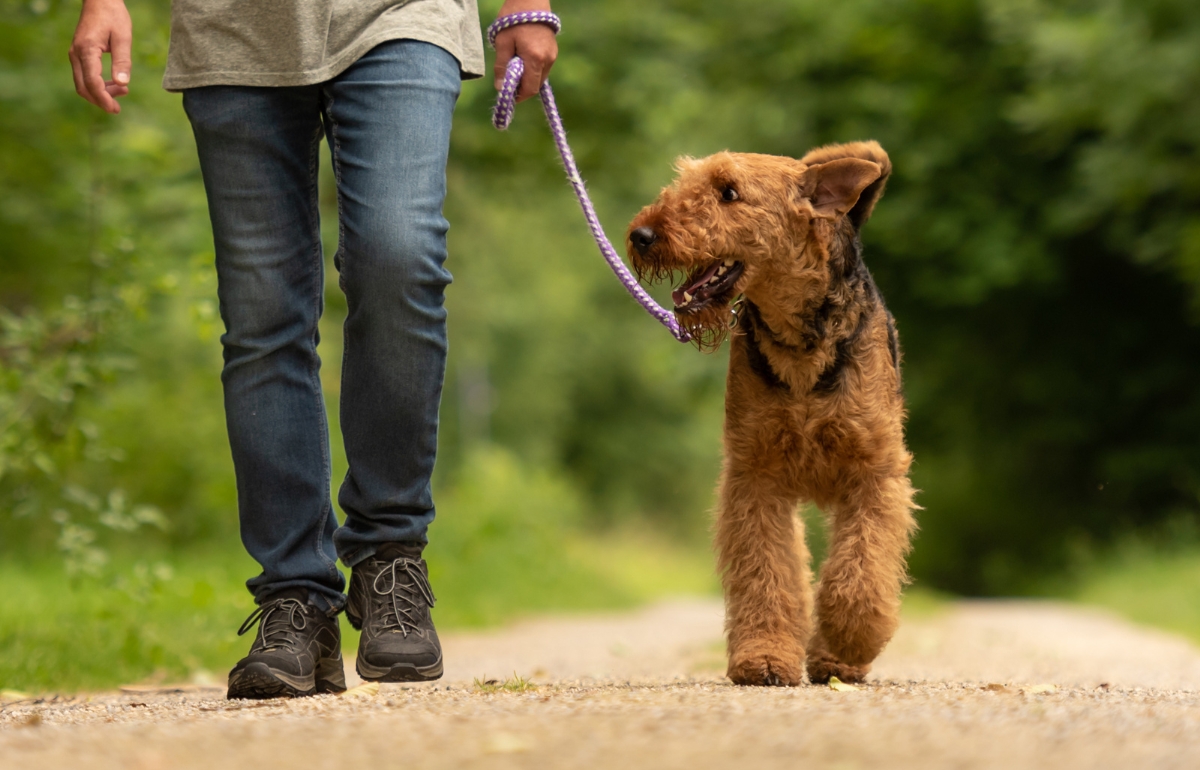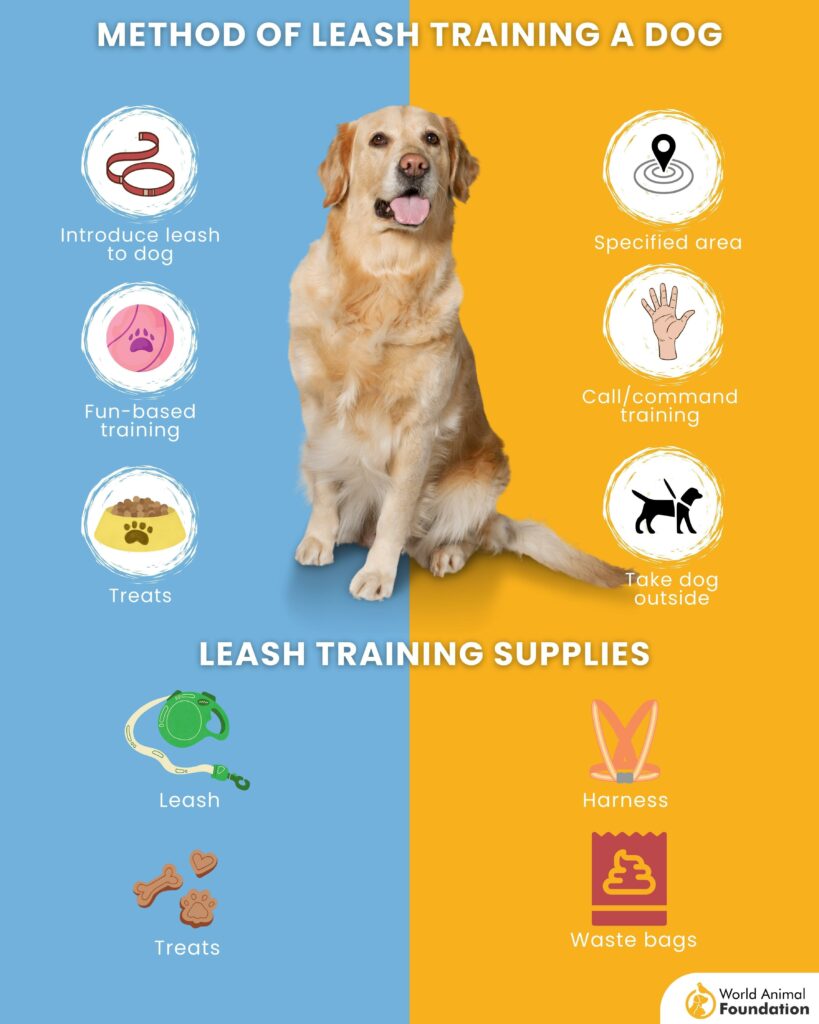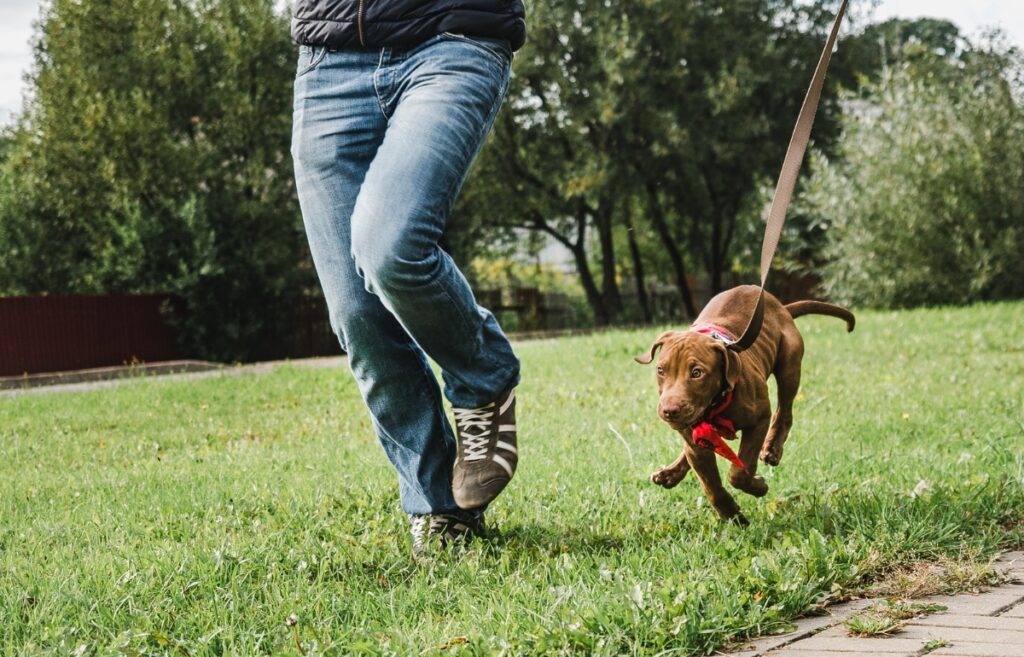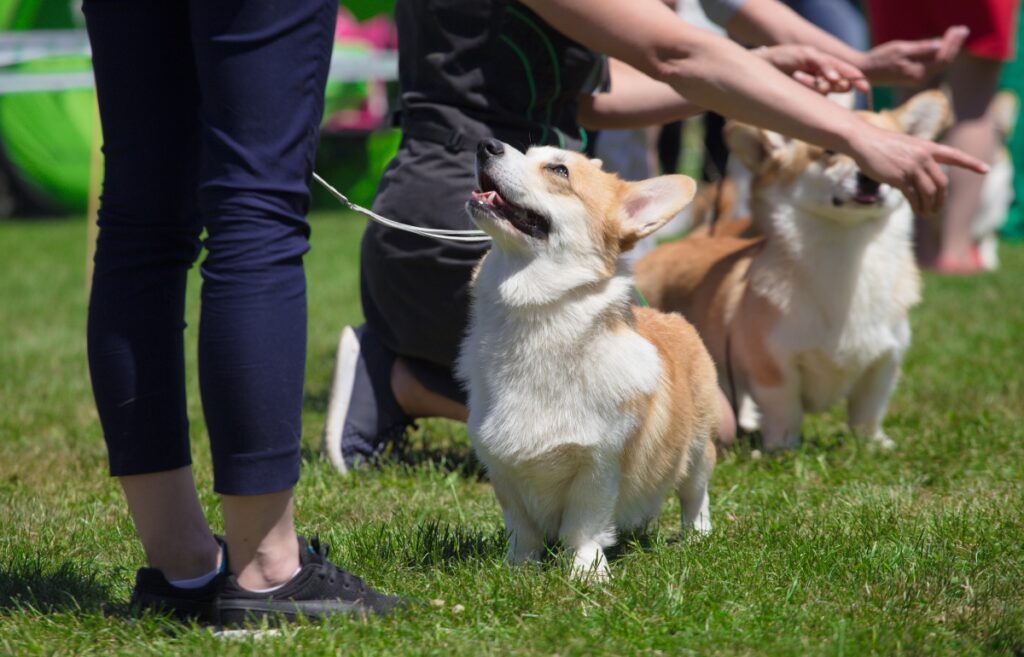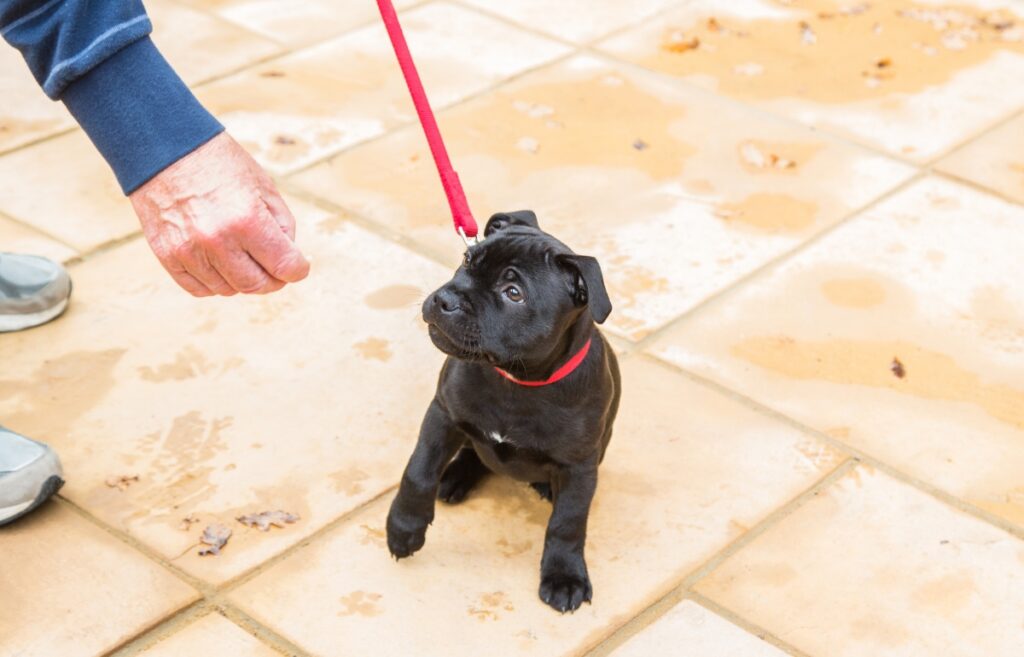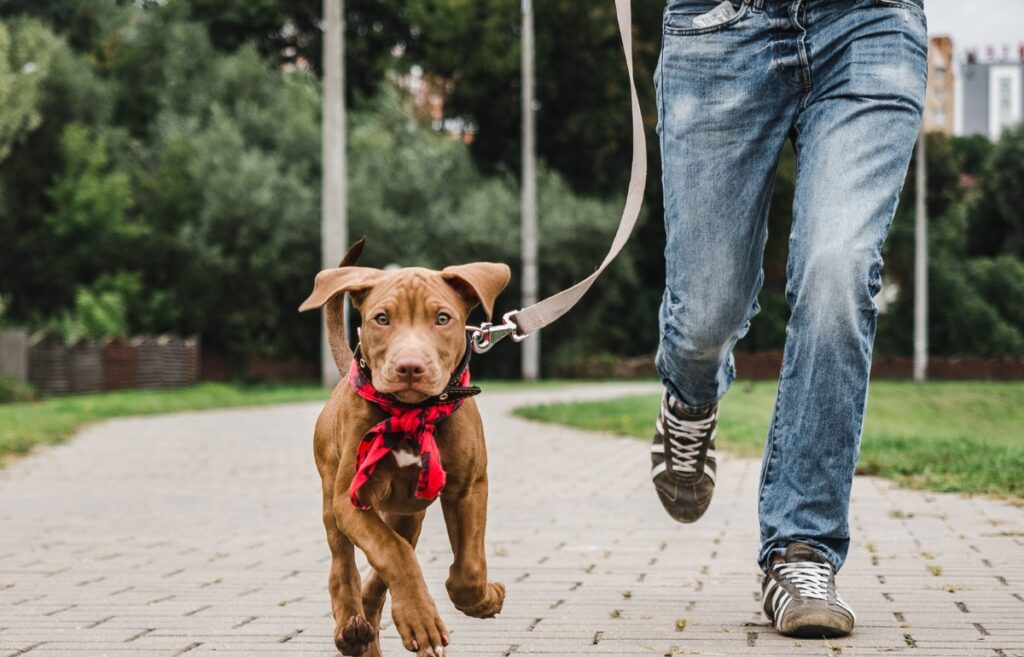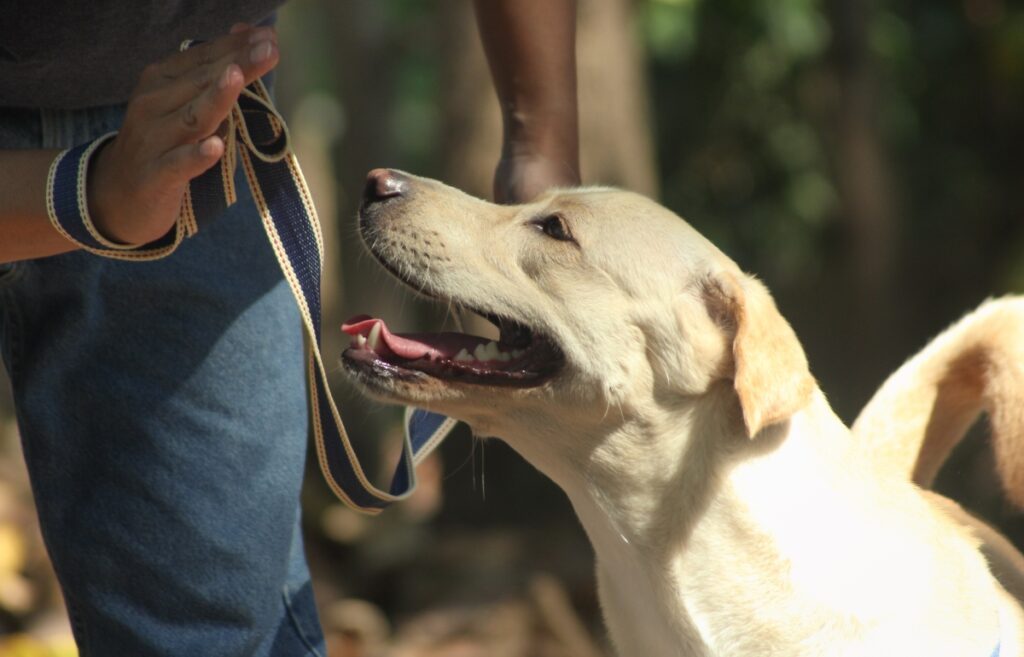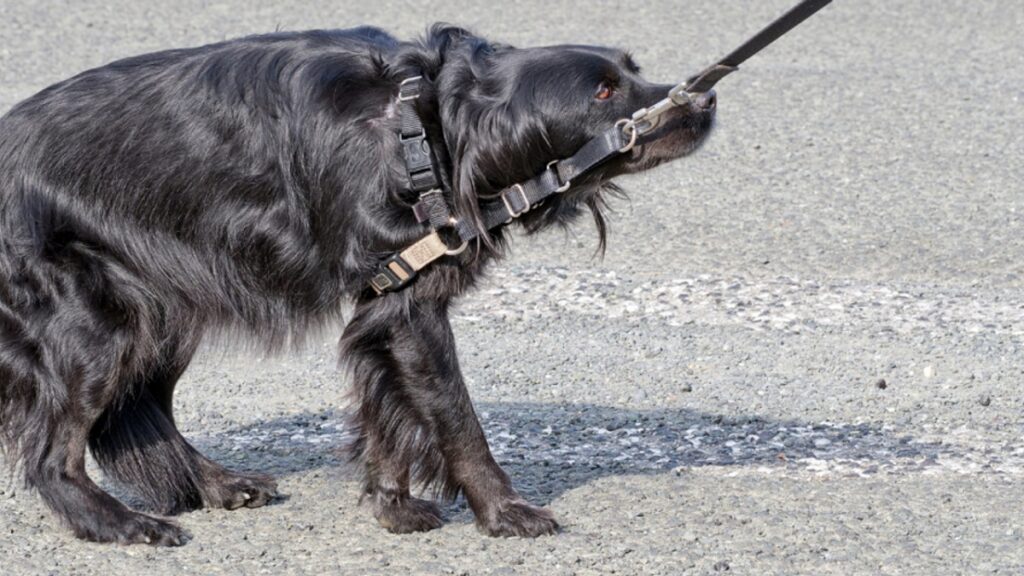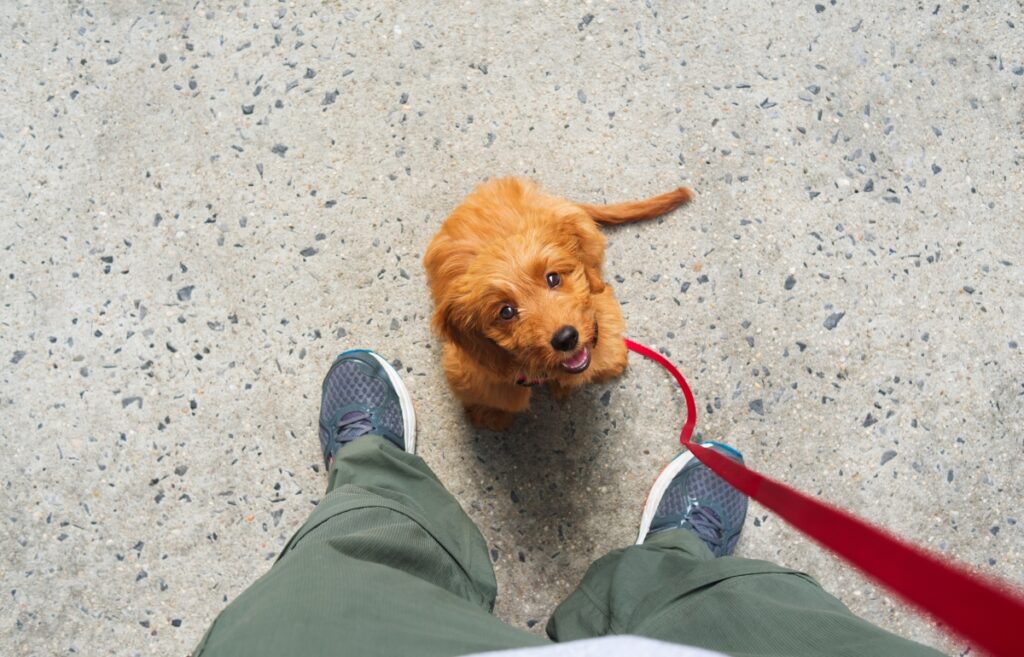Leash training can transform your dog walks from a frustrating tug-of-war into enjoyable strolls. This guide provides expert tips and helpful tricks to make the process positive and effective, whether you have a rambunctious puppy or an older dog new to the leash. Learn how to introduce the collar and leash, master loose-leash walking, and address common challenges like pulling and lunging. With patience and consistent training, you and your furry friend will be enjoying stress-free walks in no time.
You want to learn how to leash train a dog, but you’re unsure where to start. Don’t worry. I’ve helped dozens of pet parents harness the power of their daily walks through effective but calm dog training techniques. Dog walks are supposed to be a time of bonding, peace, and exploration. When you start leash training, it might seem like the complete opposite. In fact, your pup might not want to walk at all.
In this guide, I hope to get you strolling through the neighborhood like a professional. You’ll be the envy of all other dog owners on the block with these puppy leash training tips.
How to Leash Train a Dog
Let’s dive right into some actionable leash training tips that will help get your training sessions off on the right foot.
Select an Assigned Area
You reinforce your dog’s natural instinct to create habits by starting to leash train in a specific area. You’re providing a controlled environment where you can control the amount of distractions to prevent issues from occurring.
I like to provide a comparison here. A lot of people think it’s best to practice walking and leash training where there are other dogs at dog parks and public areas. This is not a good idea.
When you begin indoors, in your home, you establish a calm and anxiety-free environment. As habits are formed more easily in a familiar setting, the controlled space enables you to reinforce commands consistently.
Introduce Your Dog to Their Leash
If you haven’t already, introduce the dog leash. Leave it on the floor, let them sniff it up, and see what they think. Before you can get your dog to walk, both you and your pup must familiarize yourself with the dog leash.
When you put it on them for the first time, make sure to just leave it on and let them walk around the house with it for a little while. Don’t immediately jump into walking. Your dog needs to become comfortable with the leash before you can start taking them outside.
Methods of Training
Next, let’s talk about some of the training methods that will help your dog to walk with its leash. Remember that collar and leash time is important, and you want to devote as much time as possible to this while you’re training them.
Fun-Based Training
Keeping your dog’s attention when you’re trying to teach them something is always a challenge, but making the process fun can always help. Incorporating games and praise will reinforce good behavior and help your pup to associate their leash with a positive experience.
Gradually introduce short walks with playful activities along the way, such as fetch or exploring new scents. This method capitalizes on your dog’s natural curiosity and eagerness to engage, reinforcing desired behaviors while fostering a strong bond.
Positive Reinforcement
You want to reward positive behavior, right? So, you need to make sure to have the same attitude. Getting your dog to walk on a leash is challenging, so remain patient, don’t get upset, and understand that most dogs will get it eventually – it just takes time.
Reward-Based Training
Dogs have a short attention span, so there aren’t many things you can do to keep their attention. That said, a tasty treat will always work for your furry friend. Make sure you’re training them for short periods, and keep the treat pouch nearby.
Each time they take their leash without resistance or if they begin walking properly, offer treats to reinforce the fact that they made a good choice, and each time they do it, they’ll receive a reward.
Calling Your Dog’s Name
Getting your puppy to understand their name is an important skill that most dogs will learn around a few weeks old. Teach your dog their name and consistently use it when addressing behavioral issues.
Be sure to use an upbeat tone at all times when handling good behavior and a calmer tone when addressing bad behavior. Do not yell or scold your puppy if they don’t follow your directions early on in their training.
Taking Them Outside
At this point, you can officially take your dog outside in a public area to see how they handle it. Make sure to keep a loose leash and motivate your dog to walk politely alongside you rather than pull you. If your dog continues pulling, getting a dog leash for pullers might be a good idea!
Depending on the size of your dog, this can go a variety of ways. Every dog is different. While some will easily be distracted by sights and scents, others will be timid and afraid to wander too far from you.
This point is where you’ll learn how outdoor walks are going to go for you as well as teaching your dog to pee outside. Stay alert for distractions that could startle your pup, and stop walking if your new puppy seems afraid or concerned with something up ahead.
Supplies for Leash Training
Next, let’s talk about some of the supplies you’ll want to have for leash training. A lot has changed over the years, and leashes are more comfortable and safer for our dogs to use. Make sure you use the correct loose leash when training your pup.
Leash
Selecting the appropriate leash is a crucial aspect of successful leash training. The right leash provides comfort and control, enhancing the overall training experience. Consider factors like length, material, and handle design.
A shorter leash offers better control and minimizes tangling, which is ideal for teaching obedience. A loose leash encourages exploration while practicing recall commands. Then we have a retractable leash as an option too!
I recommend a retractable leash; that way, you always have control if your pup starts to get away from you. Choosing the perfect leash is an important step for getting your dog to walk on a leash properly.
Treats
I’m a little impartial regarding treats because I don’t believe in rewarding dogs with treats every time they do something right. That said, it’s a mechanism for success but not a habit you want to create.
Many dogs will respond to treats but don’t simply reward them for every little thing. Early on in your training, I recommend offering treats frequently if they can go a bit without leash pulling. Once your training improves, consider reducing the frequency of treats because it can be unhealthy and create false expectations.
Always choose healthy treat options for your dogs that contain real meat and protein instead of fake ingredients, salt, sugar, and food dyes.
Waste Bags
Getting your dog to walk is one thing, but picking up after them is your responsibility. Don’t be the person in the neighborhood that allows their pup to go in other people’s yards and leaves it there. It’s not a good thing, and it doesn’t represent dog owners in a positive light.
No matter where you are, have some form of a waste bag, whether it’s an actual doggy doo-doo bag or a simple plastic grocery bag. Do your part to clean up after your dog.
Harness
A leash and a dog harness are both essential tools for dog owners, but they serve distinct purposes during dog leash training and daily walks. A leash is a length of material, typically made of nylon or leather, that attaches to your dog’s collar or harness. It provides a direct connection between you and your dog, allowing you to control their movement and direction.
On the other hand, a harness is a type of equipment designed to be worn around a dog’s body, distributing pressure more evenly than a dog collar.
While you can start with a loose leash, I recommend eventually graduating to a harness or a head halter. This reduces leash pressure if your dog lunges or tries to pull forward in the opposite direction. A harness doesn’t rely so heavily on the neck, so it’s more comfortable and less likely to cause any sort of damage.
Addressing Leash Training Problems
When you start walking, it’s normal to notice some issues. Help your dog learn the correct way to walk on a leash by addressing the problems early on with a patient and consistent attitude.
Pulling
If you have a dog pulling at the leash, stop walking and address the issue. You can use a no-pull harness that automatically redirects your pup back in the right direction. This makes it uncomfortable for your dog to walk if they keep pulling.
Consider moving to a distraction-free area. You might have pushed your pup too quickly to a place where they’re overstimulated by everything. Hold and keep a loose leash at all times and once they start pulling, stop walking and stand there applying gentle pressure until your puppy turns back, wondering what you’re doing.
Lunges
Lunging is generally the result of excitement, fear, or desire to go after something. It’s important that you take this leash training troubleshooting seriously because it can be harmful to both your pup and another dog or person nearby.
Loose leash walking alongside your dog, and redirecting their attention using a strong word can help. Have a word like “focus” or “come,” and use a stern tone when saying it. Each time they listen, offer a positive tone or a reward.
Desensitization is an important skill that will help too. Gradually expose your dog to the trigger at a distance where they can remain calm. After a few repetitions, gradually decrease the distance while ensuring your dog remains relaxed.
Barking
When you’re leash training a puppy, barking is inevitable, but when does it become too much? If you have a hard time getting your dog to walk because they’re too busy pulling and barking at something, you need to address the issue.
Identify what it is that bothers or stimulates them and causes them to bark. Remember that every dog is different. I can remember I had a puppy that hated school buses and would bark like crazy whenever a school bus passed. You can only pick up on these triggers through exposure.
Train your dog to cope with these distractions (smells, sounds, and sudden movements) by exposing them to it from a distance, and use your focus word to make sure that you have their attention.
Biting
If you have a dog that’s biting other dogs and people, you may feel helpless. I understand how scary this can be, and I would say this is the point where you should seek professional help. I do not recommend extreme techniques like shock collar therapy.
Dog trainers will provide personalized guidance that will help your pup become an adult dog that lives a long and happy life without becoming violent or dangerous to those around them.
Benefits of Leash Training a Dog
Here are some of the benefits of loose leash training your pooch:
- Obedience: Leash training reinforces obedience and helps dogs understand and follow commands more effectively.
- Bonding: Training sessions create opportunities for positive interaction and strengthen the bond between the dog and owner.
- Control: Leash training gives owners better control over their dog’s movements, ensuring safety in various environments.
- Safety: Dogs are less likely to run into traffic or potentially dangerous situations when they are trained to walk on a leash.
- Socialization: Leash training enables controlled exposure to different people, dogs, and environments, improving a dog’s social skills.
- Reduced Pulling: Proper training teaches dogs to walk calmly without excessive pulling on the leash, making walks more enjoyable for both parties.
- Improved Communication: Dogs learn to respond to cues and commands while on a leash, leading to clearer communication between the dog and owner.
- Confidence: Dogs gain confidence as they learn to navigate the world around them while following their owner’s lead.
- Exercise: Regular leash walks provide dogs with necessary physical exercise and mental stimulation.
FAQs
Here are some of the most frequently asked questions about dog walking and leash training:
At What Age Should I Start Leash Training My Puppy?
You can start training at around 10 weeks old if your puppy is comfortable and understands basic routines like eating and potty training. Keep in mind that it’s helpful to focus on one thing at a time. If you’re crate training your pup, focus on that for now.
How to Train a Dog Not to Pull on the Leash?
The best way to prevent puppies from pulling is to expose them early to training, offer gentle pressure on the leash when they pull, and motivate your dog to walk on a loose leash with rewards.
Why Do I Need a Dog Harness?
A dog harness is much safer for your pup than a leash because it doesn’t put as much pressure on their neck, and it offers more control over their entire body in the event that they start trying to pull away from you.
Final Thought
Getting your dog to walk on a leash is a big accomplishment for many pet parents. Training your dog takes a lot of patience and time. Taking small steps in the right direction is recommended. The training starts in the comfort of your own home, and remember that it all boils down to you. Expecting your puppy to learn something is never the right attitude.
Do your part in creating enjoyable memories by keeping your walks short, using the right harness and leash, and offering positive reinforcement whenever possible. Good luck!
Leash training, while initially challenging, is a rewarding endeavor for both dog and owner. Consistency, positive reinforcement, and patience are key to success. By starting slowly, using appropriate equipment, and addressing your dog’s individual needs, you can build a positive association with the leash. Remember that setbacks are normal. With dedication and the expert tips outlined, you can transform walks from a frustrating experience into enjoyable bonding time, paving the way for a well-behaved and happy canine companion.

